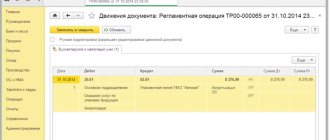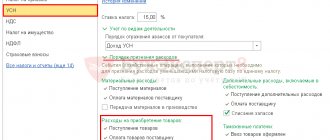Accounting in construction has its own individual characteristics. Carrying out accounting requires special industry knowledge of the accountant and practical experience. Accounting in construction is carried out on the basis of current legal acts that regulate: the procedure for investing funds, the procedure for accounting for contract agreements and other provisions. General requirements for accounting allow you to correctly calculate the company's income and expenses. Depending on the specifics of the industry, additional regulatory sources may apply.
Contractor accounting
Accounting is carried out on the basis of the following regulations: PBU 9/99, PBU 10/99, PBU 2/94, PBU. The entire cost part is subject to division into the elements listed above. Construction costs are displayed in accordance with accounting account 20 “Main production”. Costs for materials, payments to employees are recorded, and settlements with suppliers are additionally displayed. Phased acceptance is carried out using account 46, with the formation of posting Dt 46 Kt 90.
Accounting in a construction organization
Accounting is somewhat different from the norms in force for other business entities. The differences lie in the documentation. To carry out mutual settlements with contractors, construction organizations use the following documents:
- Form No. KS-2;
- Form No. KS-3.
Form 2 is drawn up by the contractor based on the results of the work performed. Form 3 is the basis for mutual settlements between the customer and the contractor. The first document can be drawn up upon completion of the entire scope of construction or taking into account the phased implementation of work. The last option is most preferable for contractors.
What legal acts regulate the maintenance of a log of construction work?
The main feature of the legislative regulation of maintaining a log of construction work is that its forms are actually enshrined in 2 different sources of law:
- In the Decree of the State Statistics Committee of the Russian Federation dated October 30, 1997 No. 71a - form KS-6, corresponding to number 0336001 according to OKUD.
- Order of Rostechnadzor No. 7 dated January 12, 2007, which approved the procedure for maintaining general and special logs of construction work. The procedure is considered a regulatory document, which is assigned the number RD-11-05-2007. The log form is given in Appendix 1 to this procedure.
In the practice of conducting construction work, the journal form from the procedure RD-11-05-2007, approved by Order No. 7, is most often used. But in some cases, the authorities carrying out construction supervision still require the developer to submit form KS-6. Thus, it will be useful to study the nuances of filling out both documents.
Construction control is a mandatory stage, the absence of which can lead to fines. ConsultantPlus experts explained in detail how to properly carry out construction control and reflect it in the general work log. Get trial demo access to the K+ system and upgrade to the Ready Solution for free.
Postings for specific construction expenses
The status of the customer and his investments in construction determine the accounting plan. Postings for specific construction expenses are made as follows:
- The operation of the company transferring materials and equipment to the contractor in an amount over 20,000 rubles is reflected in the section “Contributions to non-current assets” (debit 08) and in the section “Settlements with suppliers and contractors” (credit 60).
- If the amount is less than 20,000 rubles, the action is carried out through “Materials” (debit 10) and “Settlements with suppliers” (credit 60).
- The fact of the initial operation of the object is recorded through “Fixed capital” and “Contribution to non-current assets”.
- To write off building materials, use the “List of Written Off Materials”.
- Percentage tax surcharges are displayed in the “VAT” section, indicating the amount in a special separate cell.
- After completion of the construction process, state registration of the object is carried out and data is entered into the “Fixed Capital”.
All of the above rules apply to accounting for the customer construction company.
Postings from the contractor are drawn up in accordance with debit 20 “Main production”, which will subsequently correlate with credit 60 (payment for supplies), credit 70 (settlements with employees) and credit 10 (inventories).
During phased construction, the customer accepts the results of the work at each stage. In this case, debit 46 is combined with credit 90.
Carrying out accounting operations requires highly qualified accountants. Quite often, companies invite highly specialized specialists to fill this position.
Taxation in construction
Keeping tax records in construction allows you to create and summarize information that will allow you to determine the tax base based on primary documentation data. The goals are the following: generating reliable information, ensuring control of the completeness and correctness of calculations for subsequent payment to the budget.
The basic principles of taxation in construction are the economic justification of expenses and their documentary justification. Taxation in construction should be compiled in such a way that the information makes clear the following nuances:
- methods for determining income and expenses;
- algorithms for the formation of tax bases;
- the methods used to form reserves;
- methods of temporary distribution of expenses;
- mechanisms for transferring part of expenses to subsequent periods;
- formation of other tax parameters.
The activities of construction organizations are carried out in accordance with current tax legislation. Regulatory documents contain provisions that take into account the specifics of construction activities.
Income tax does not include expenses for the acquisition of depreciable property, expenses for modernization and technical re-equipment of the facility. Income tax is not calculated in the case of additional work to restore the property.
Amounts saved during construction work are subject to income tax as non-operating income. Accounting is carried out for both direct and indirect expenses of the company. The customer independently determines the list of funds spent related to the provision of services and the procedure for their distribution. The result is necessarily recorded in the tax accounting policy of the enterprise.
Management accounting methods
Currently, several management accounting information systems have been developed that approach budgeting in different ways:
- “Direct costing” summarizes direct costs separately for each construction project, and writes off indirect costs to reduce operating profit, demonstrating the relationship between the profit of a construction organization, its production volume and the costs incurred;
- “Standard-Cost” proposes to develop certain standard indicators for each expense item, taking into account actual costs and recording deviations from the designated standards;
- CVP analysis (from the English “costs-volume-profit” - “costs-volume-profit”) – registers the relationship between costs, selling prices, production activities and the final financial result.
These techniques are used in construction in integration. The use of “Standard-cost” is especially important, since the design-stage nature of this production provides for the achievement of specific standardized indicators - construction standards.
FOR YOUR INFORMATION! The famous “Gantt rule” states that expenses that exceed norms should not be included in expense accounts, but assigned to those responsible for them.
Program "BIT.CONSTRUCTION"
The BIT.CONSTRUCTION program is used to automate the tasks of all departments of a construction company. The program allows you to conduct prompt and reliable reporting on objects. The BIT.CONSTRUCTION program allows you to:
- calculate workers' salaries for each facility;
- manage financial flows, consolidate, maintain management accounting;
- maintain accounting records for contractors and customer-developers;
- automate the work of supply departments;
- systematize the work of sales departments;
- automate control processes for construction machines and mechanisms.
The BIT.CONSTRUCTION system is distinguished by its modular architecture. Each module is designed to solve a specific industry problem. The program includes several automated systems and includes comprehensive solutions for customers, contractors, supply department employees, foremen, accountants, etc. The selection of a line module is made by the customer depending on the goals and objectives set.
Specifics of the construction industry from the point of view of management accounting
Construction as an activity is characterized by a number of specific nuances that cause increased financial risk when implementing projects in this area. Management accounting can significantly reduce the degree of risk if it is organized and maintained on the basis of industry factors taken into account.
- Dependence on the state. Construction, like no other area, is largely subordinate to the state “machine”, primarily in obtaining permits, approvals, registration, etc. The costs of these activities are difficult to plan in advance.
- Long investment cycle. Construction is a slow process. From the start of a project to its completion (acceptance of the finished building by the commission) several years, sometimes even a decade, can pass, and during this time the market situation can change significantly.
- Each project is unique. Yes, there are standard structures, but even they need to be adapted to a specific area, and other unique nuances must be taken into account.
- Design and estimate nature of the activity. Financial planning is based on a previously drawn up estimate, on which the effectiveness of the project depends.
- A unique management structure. Most domestic construction organizations operate in the form of holdings that combine some production facilities, a contractor company, a design bureau, an investment company, etc. Sometimes there is a separate management company above this structure, in some cases its functions are performed by an investor.
- Human factor. Unfortunately, it should be noted that often personnel and managers of construction companies do not accept innovations in the field of management techniques and information systems, which can complicate the implementation of effective management accounting.
FOR EXAMPLE. A construction company is building an apartment building, the housing in which is planned to be sold. The closer the construction is completed, the higher the price of apartments. In a finished and accepted house, they will cost significantly more than at the initial stage of construction. Therefore, it is difficult to correlate the construction plan with the apartment sales plan. It is necessary to keep records in such a way that at each stage so many apartments can be sold, taking into account the changing price, in order to be able to at least finance this stage of construction work.
Advantages of the BIT.CONSTRUCTION program
Integrated solutions for process automation have the following key advantages:
- providing reporting on objects in the shortest possible time;
- obtaining competitive advantages for participation in tenders;
- reducing the time required to enter primary documentation;
- cost minimization: total company budget savings can be up to 20%;
- simplification of maintenance and reporting;
- possibility of maintaining management accounting.
The program allows you to automate the work of all departments of a construction company. Thanks to the new solution, it is possible to quickly maintain and receive reports on all objects. The system performs a full cycle of planning, accounting, control and analysis of the movement of materials.
Find out now how the program works! Fill out the application form for a free two-week test and follow the instructions that will be sent to your email. Our specialist will contact you to help you test the program. You can ask him all questions about the functionality of the service and the cost of automation.
Did you like the article?
Want to receive articles like this every Thursday? Keep abreast of changes in legislation? Subscribe to our newsletter





